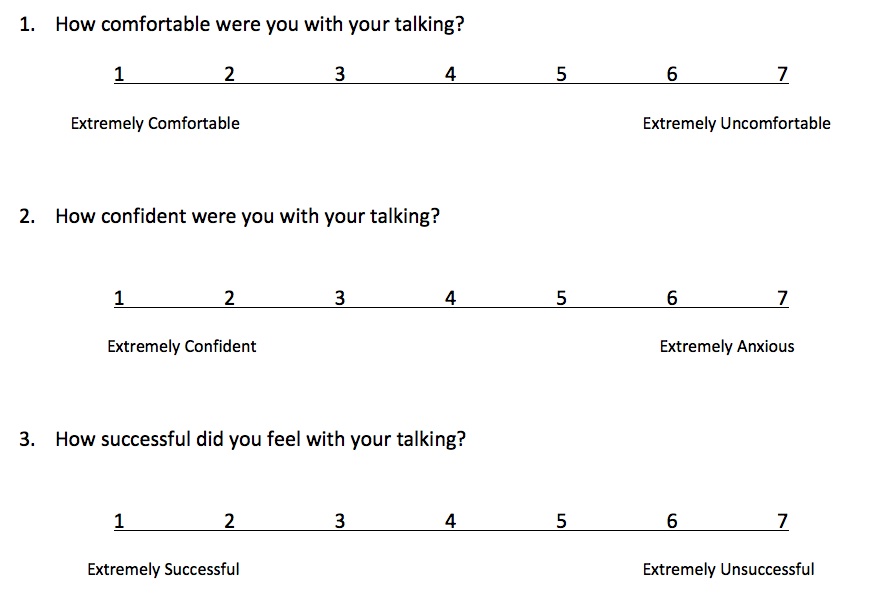Rating Scales as a Clinical Tool
 |
About the presenter: Sheryl R. Gottwald, Ph.D., CCC-SLP, is an Assistant Clinical Professor at the University of New Hampshire where she teaches the graduate courses in Fluency Disorders and Stuttering. Dr. Gottwald is a Board Recognized Fluency Specialist and Mentor. She has lectured nationally and internationally in the area of stuttering. |
Rating Scales as a Clinical Tool
by Sheryl Gottwald
from New Hampshire, USA
A clinical tool I have found most useful is the rating scale. I use rating scales for a variety of purposes, including ongoing measurement of therapy progress. The 3 rating scales I use most often are client-centered and are as follows:

Clients will evaluate their communication experiences by putting a slash mark on each scale at the beginning of each therapy session. We will then use those ratings to talk about the client's experiences with talking between therapy sessions. Clients identify the factors that impacted their comfort, confidence and success as a communicator. We can then begin to address those factors in our therapy session.
Clients will also use the rating scales above to evaluate specific speaking situations. For example, one client was working on improving his communication while ordering food at a fast food restaurant. He filled out the rating scales above before beginning to develop his communication skills in this context. This client rated his comfort and confidence levels as a '7' and his success as a '5'. Next, the client brainstormed factors that contributed to his decreased comfort and confidence levels. Some of the factors this client identified included:
- Too much blocking
- Worrying ahead of time about getting stuck
- Feeling rushed when there were customers waiting in line behind him
- Feeling that success meant he had to be 100% fluent
The client then worked on each of these factors in therapy. He practiced using a relaxed prolongation to loosen the stuttering blocks, positive self-talk to help manage his worry about getting stuck, a slower speech rate at the beginning of his interactions with the clerk, and purposeful stuttering that he was able to more easily control. Finally, the client entered this feared speaking context on numerous occasions. He used the rating scales after each opportunity to measure progress and identify areas to continue to address in therapy.
I adjust the rating scale language dependent upon the age and needs of the client. For example, the parents of a preschooler I am currently working with use an 'effort' scale to measure the amount of effort their youngster is putting into talking. On this scale, a '1' is equal to relaxed and effortless speech while a '7' relates to very tense, struggled speech. By keeping track of the amount of effort their child uses while talking, these parents have begun to identify environmental factors that may be supporting or stressing normal fluency. These parents are now encouraging conversational turn-taking, talking 'rests', and a slower daily pace as those factors appeared correlated with the level of speech effort evident on the family's daily scale.

